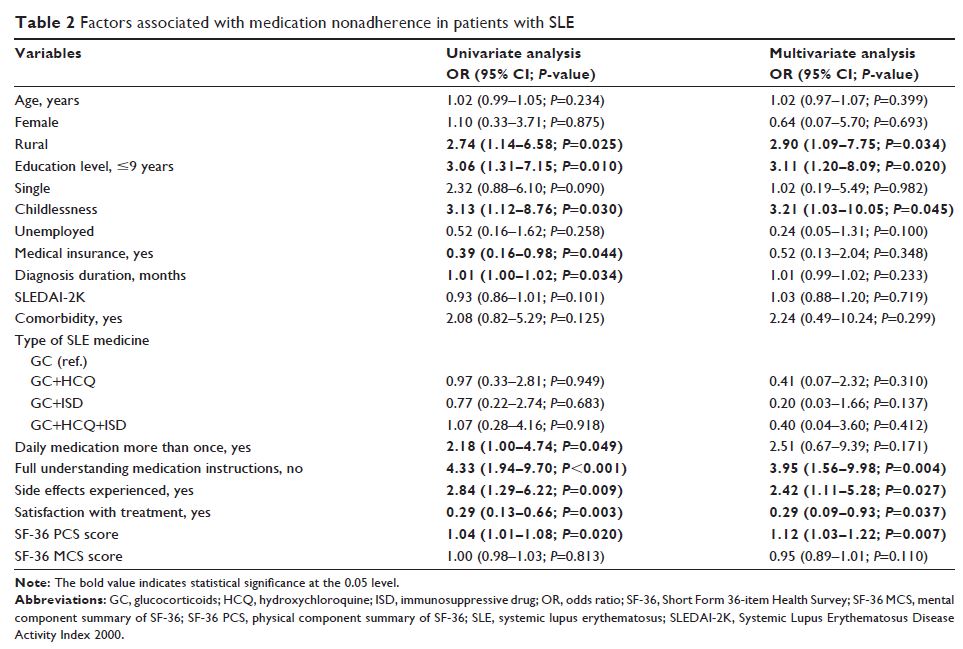108605
论文已发表
注册即可获取德孚的最新动态
IF 收录期刊
- 3.4 Breast Cancer (Dove Med Press)
- 3.2 Clin Epidemiol
- 2.6 Cancer Manag Res
- 2.9 Infect Drug Resist
- 3.7 Clin Interv Aging
- 5.1 Drug Des Dev Ther
- 3.1 Int J Chronic Obstr
- 6.6 Int J Nanomed
- 2.6 Int J Women's Health
- 2.9 Neuropsych Dis Treat
- 2.8 OncoTargets Ther
- 2.0 Patient Prefer Adher
- 2.2 Ther Clin Risk Manag
- 2.5 J Pain Res
- 3.0 Diabet Metab Synd Ob
- 3.2 Psychol Res Behav Ma
- 3.4 Nat Sci Sleep
- 1.8 Pharmgenomics Pers Med
- 2.0 Risk Manag Healthc Policy
- 4.1 J Inflamm Res
- 2.0 Int J Gen Med
- 3.4 J Hepatocell Carcinoma
- 3.0 J Asthma Allergy
- 2.2 Clin Cosmet Investig Dermatol
- 2.4 J Multidiscip Healthc

四川省系统性红斑狼疮患者药物不依从性的预测因素:一个横断面研究
Authors Xie X, Yang H, Nie A, Chen H, Li J
Received 30 March 2018
Accepted for publication 26 June 2018
Published 21 August 2018 Volume 2018:12 Pages 1505—1511
DOI https://doi.org/10.2147/PPA.S169776
Checked for plagiarism Yes
Review by Single-blind
Peer reviewers approved by Dr Colin Mak
Peer reviewer comments 3
Editor who approved publication: Dr Naifeng Liu
Purpose: The aim of this study was to determine the prevalence and predictors of medication nonadherence among patients with systemic lupus erythematosus (SLE) in Sichuan.
Patients and methods: A cross-sectional investigation was performed. Participants were recruited by consecutive sampling from the Rheumatic Clinic of a university hospital between June and September 2016. Patients’ self-reported medication adherence was assessed by the eight-item Morisky Medication Adherence Scale. Additional surveys included patients’ demographics, and clinical and treatment characteristics. Logistic regression analysis was used to identify the predictors of medication nonadherence.
Results: A total of 140 patients were included in analysis. The percentage of patients classified as nonadherent to medication was 75%. Low education, rural residency, childlessness, limited comprehension of medication instructions, side effects experienced, dissatisfaction with treatment and better physical health were associated with an increased risk of nonadherence.
Conclusion: This study demonstrated a high prevalence of medication nonadherence among SLE patients in Sichuan, and factors associated with the nonadherence are multifaceted. Interventions for these factors, such as appropriate adjustment of the service resources for patients with rheumatic disease in rural communities and improved communication between the health care providers and the patients, may contribute to improve the medication adherence of this cohort.
Keywords: systemic lupus erythematosus, medication management, adherence, predictors
